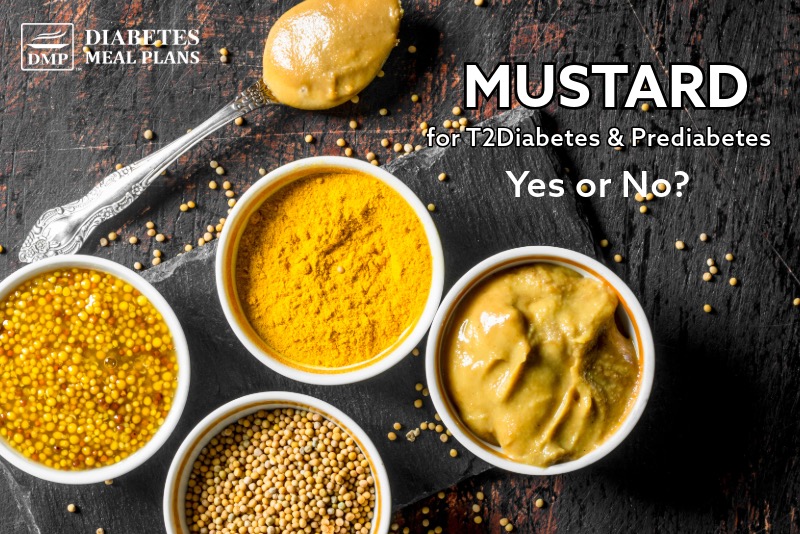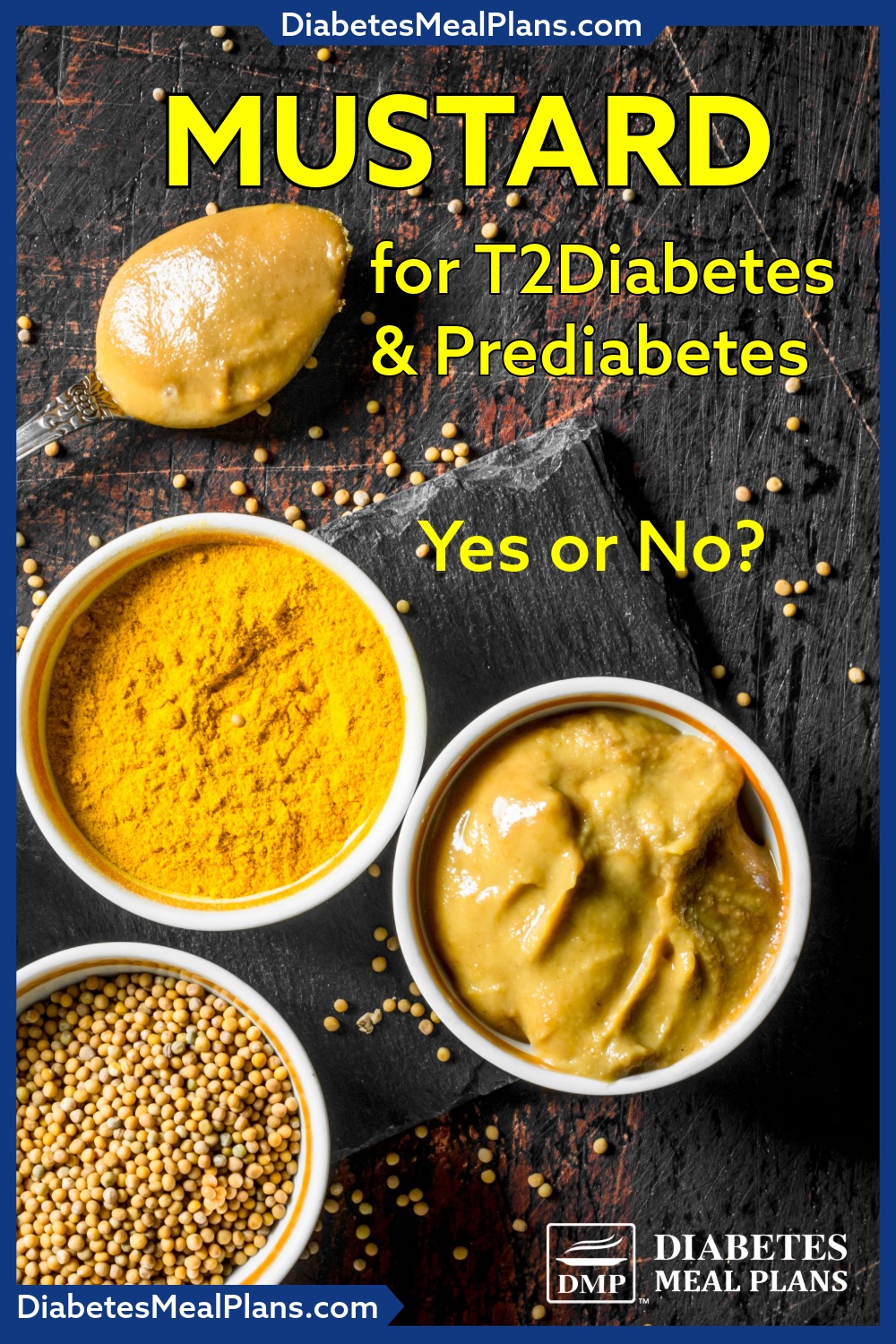Table of Contents[Hide][Show]
Mustard is a common condiment found in many households, but is it a good choice for people with type 2 diabetes and prediabetes?
Many condiments contain added sugars, unhealthy fats and preservatives that can negatively impact blood sugar levels.
However, mustard is unique. Not only is it low in carbohydrates, but it also contains compounds that may offer health benefits, including blood sugar regulation and anti-inflammatory effects.
Let’s explore the nutritional profile of mustard, its potential benefits for diabetics, and how to incorporate it into a blood sugar-friendly diet.
Mustard Nutrition: What’s Inside?
Mustard is made from mustard seeds, vinegar, salt, and spices. The type of mustard can vary, with common varieties including yellow mustard, Dijon mustard, and whole-grain mustard.
Unlike ketchup or barbecue sauce, mustard contains little to no sugar, making it a great low carb option.
A typical serving of mustard (1 teaspoon) contains:
- Calories: 3–5
- Carbohydrates: <1g
- Protein: 0.2g
- Fat: 0.2g
- Fiber: 0.1g
- Sodium: Varies by brand
Mustard also contains small amounts of micronutrients, such as selenium and magnesium, which play roles in metabolic health.

Does Mustard Affect Blood Sugar?
One of the biggest concerns for people with diabetes is how foods impact blood sugar. Mustard is an excellent choice because:
1. Low in Carbohydrates
Since mustard contains almost no carbohydrates, it does not spike blood sugar levels. This makes it a safer alternative to high-sugar condiments like ketchup, sweet relishes or honey mustard.
2. May Improve Insulin Sensitivity
Some studies suggest that mustard seeds contain bioactive compounds that could help improve insulin sensitivity.
Mustard seeds contain allyl isothiocyanate, a sulfur compound also found in cruciferous vegetables like broccoli and Brussels sprouts.
Research suggests that these compounds may have anti-diabetic effects by supporting insulin function and reducing oxidative stress.
3. Contains Antioxidants That Reduce Inflammation
Chronic inflammation is a major driver of insulin resistance.
Mustard seeds are rich in polyphenols and flavonoids, which have been shown to reduce inflammation.
One study found that the antioxidants in mustard seeds helped lower inflammatory markers and improve metabolic health, in animal models, which suggests they could be beneficial for us as well!
4. May Support Heart Health
Heart disease is a major concern for people with diabetes.
Some research suggests that mustard may support cardiovascular health by reducing LDL (“bad”) cholesterol and triglycerides while increasing HDL (“good”) cholesterol.
This effect is likely due to its healthy fat content, particularly in whole-grain mustard varieties that contain mustard seeds in their natural form.

Other Health Benefits of Mustard for Diabetics
1. Aids in Digestion
Mustard seeds contain dietary fiber, which supports digestion and gut health.
A healthy gut microbiome has been linked to better blood sugar control and reduced inflammation in people with diabetes.
2. Help With Weight Management
Obesity is a significant risk factor for type 2 diabetes.
The compounds in mustard, particularly capsaicin-like substances found in spicy mustard, may slightly boost metabolism and fat oxidation.
While this effect is modest, every small improvement in metabolism can help with weight management.
3. Provides a Flavor Boost Without Extra Calories
People managing diabetes often need to cut back on processed sauces and high-calorie condiments.
Mustard adds a strong, tangy flavor to meals without adding sugar, making it an excellent choice for seasoning foods without spiking blood sugar.
4. Boost Immune and Metabolic Health
Research shows that due to the natural phenolic compounds in mustard, it also has anti-cancer, anti-obesity, anti-diabetes, anti-bacterial, anti-hyperglycemia and anti-depressant effects—meaning it may help to boost overall immune and metabolic health!
Are There Any Downsides to Mustard?
While mustard is a great addition to a diabetes-friendly diet, there are some things to watch out for:
1. Some Mustards Contain Hidden Sugars
While traditional mustard is very low in carbohydrates, some flavored varieties (such as honey mustard) contain added sugar.
Always check the nutrition label and ingredient list to avoid unnecessary sugar intake.
2. Potential Allergies or Sensitivities
Some people may be allergic to mustard seeds, which could cause digestive discomfort or allergic reactions. If you have any known seed allergies, it’s best to avoid mustard.
How to Use Mustard in a Diabetes-Friendly Diet
If you want to incorporate mustard into your diet, here are some healthy ways to do so:
1. Use It as a Salad Dressing Base
Mix mustard with olive oil, vinegar and herbs for a simple, low carb salad dressing. Unlike store-bought dressings, this homemade version avoids added sugars and unhealthy fats.
2. Pair It With Lean Proteins
Mustard makes an excellent marinade or topping for meats like chicken, fish, and red meats like beef and lamb. Or use it on a carb-free snack like meat patties topped with mustard – yum!
Mustard’s tangy flavor enhances meals without the need for sugary sauces.

3. Add It to Roasted Vegetables
Tossing roasted vegetables with a bit of mustard can add flavor while keeping the dish low in carbs. This works well with Brussels sprouts, cauliflower and green beans.
4. Mix It Into Egg-Based Dishes
Mustard can add a delicious tang to scrambled eggs, omelets or deviled eggs without adding extra calories or carbs.
5. Use It as a Dip
Instead of high-carb dips, use mustard as a dipping sauce for raw vegetables or grilled meats.
6. Combine With Greek Yogurt for a Creamy Sauce
For a creamy, high-protein dressing, mix mustard with Greek yogurt and some herbs. This makes a great topping for fish, chicken or as a sandwich spread.
Bottom Line: Is Mustard Good for Diabetics?
Yes! Mustard is a great addition to a diabetes-friendly diet.
It is naturally low in carbohydrates, contains beneficial compounds that may help with insulin sensitivity and is a heart-healthy condiment.
Mustard can be a flavorful and nutritious way to support blood sugar control while keeping meals interesting.

Leave a Reply